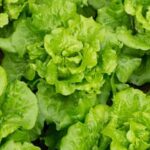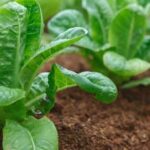Gardening vegetables in the afternoon sun can be a rewarding and beneficial activity for any gardening enthusiast. The warm rays of the afternoon sun provide an ideal environment for certain vegetables to thrive, making it a prime time for cultivation. Understanding the intricacies of gardening in the afternoon sun, from selecting the right vegetables to protecting them from heat and sunburn, is crucial for a successful harvest.
When it comes to selecting the right vegetables for afternoon sun gardening, factors such as heat tolerance and sunlight requirements play a crucial role. Certain vegetables, like tomatoes, peppers, and eggplants, thrive in the heat and do well when exposed to direct sunlight in the later part of the day. Understanding how the position of the sun impacts vegetable growth is essential for maximizing their potential yield.
In this article, we will delve into the various aspects of gardening vegetables in the afternoon sun, including soil preparation, planting techniques, and care tips for maintaining a healthy garden. Additionally, we will explore effective strategies for protecting vegetables from excessive heat and sunburn while offering valuable insights and tricks for successful vegetable gardening in the afternoon sun. Let’s embrace the beauty and benefits of harnessing nature’s warm embrace with afternoon sun gardening.
Selecting the Right Vegetables for Afternoon Sun
When it comes to gardening vegetables in the afternoon sun, selecting the right vegetables is crucial for successful growth. Not all vegetables can withstand the intense heat and sunlight, so choosing the appropriate ones is essential for a thriving garden. Some vegetables that are well-suited for afternoon sun gardening include tomatoes, peppers, eggplants, and okra. These vegetables are known for their ability to thrive in hot and sunny conditions, making them ideal choices for an afternoon sun garden.
Another great option for afternoon sun gardening is leafy greens such as lettuce, kale, and spinach. While these vegetables prefer partial shade, they can still tolerate some afternoon sun if provided with adequate water and care. Additionally, root vegetables like carrots, radishes, and beets can also do well in the afternoon sun as long as they are given enough moisture to combat the heat.
It’s important to consider the specific needs of each vegetable when selecting which ones to grow in an afternoon sun garden. By choosing varieties that are known to tolerate or even benefit from direct sunlight and high temperatures, gardeners can set themselves up for success when cultivating a vegetable garden in the afternoon sun.
Understanding the Sun’s Position and Its Impact on Vegetable Growth
When it comes to gardening vegetables in the afternoon sun, understanding the sun’s position and its impact on vegetable growth is crucial. The afternoon sun provides a longer duration of sunlight, which is beneficial for many vegetable plants. However, it is important to consider the intensity of the sun during this time and how it can affect different types of vegetables.
The position of the sun in the afternoon can vary depending on the season and your geographical location. It is essential to assess how much direct sunlight your garden receives during this time to determine which vegetables will thrive best. Leafy greens like lettuce, spinach, and kale can handle full sun exposure during the afternoon, while other vegetables like tomatoes, peppers, and eggplants may require some shade during peak sunlight hours.
In addition to understanding the sun’s position, knowing how it impacts vegetable growth is essential for successful gardening. Vegetables need a balance of sunlight and shade to grow properly. Too much direct sunlight can lead to heat stress and sunburn on leaves and fruits, affecting overall plant health and productivity. By strategically positioning your garden beds or using shade cloth when necessary, you can mitigate the negative effects of intense afternoon sun on your vegetable plants.
| Vegetable | Sunlight Needs |
|---|---|
| Lettuce | Full Sun |
| Tomatoes | Partial Shade |
| Peppers | Partial Shade |
Preparing the Soil for Afternoon Sun Gardening
When it comes to gardening vegetables in the afternoon sun, preparing the soil is essential for successful growth and harvest. The right soil conditions can make a significant difference in the health and productivity of your vegetable garden. Here are some important steps to consider when preparing the soil for gardening in the afternoon sun:
Test the Soil
Before you start preparing the soil, it’s important to test its pH level and nutrient content. You can purchase a soil testing kit from your local gardening center or have a professional test it for you. Understanding the current state of your soil will help you determine what amendments are necessary to create an optimal growing environment.
Amend the Soil
Once you have tested your soil, you may need to amend it with organic matter or fertilizers to improve its quality. Adding compost, aged manure, or other organic materials can help improve drainage, water retention, and nutrient levels in the soil. It’s important to thoroughly mix these amendments into the existing soil to ensure an even distribution.
Provide Adequate Drainage
Proper drainage is crucial when gardening vegetables in the afternoon sun. To prevent waterlogging and root rot, ensure that your garden beds have adequate drainage. Raised beds can be a good option for improving drainage, especially if your soil tends to retain too much water.
By following these steps and providing your vegetable garden with well-prepared soil, you can create an ideal environment for growing healthy and thriving plants even in direct sunlight during the afternoon hours. With proper soil preparation, your vegetables will be better equipped to absorb nutrients and water efficiently from the sun-warmed earth.
Planting and Caring for Vegetables in the Afternoon Sun
Choosing the Right Time
When it comes to planting vegetables in the afternoon sun, timing is everything. The best time to plant is during the cooler parts of the day, such as early morning or late afternoon. This minimizes stress on the plants and helps them establish their roots before the heat of the day sets in. Additionally, regular watering is essential to keep the soil moist and prevent it from drying out under the intense afternoon sun.
Providing Adequate Shade
While some vegetables thrive in direct sunlight, others may require a bit of shade to protect them from the scorching afternoon heat. Consider using shade cloth or planting taller vegetables in a way that provides natural shade for those that are more sensitive to high temperatures. This will help maintain a balanced environment for all your plants, allowing them to flourish despite the strong afternoon sun.
Preventing Overheating
In addition to providing shade, it’s important to take steps to prevent overheating of the soil. Mulching your garden can help regulate soil temperature by insulating it from extreme heat and preventing rapid water evaporation. Furthermore, frequent but light watering can cool down both the soil and plant leaves, reducing heat stress and minimizing the risk of sunburn on your vegetables.
By taking these measures when planting and caring for your vegetables in the afternoon sun, you can ensure that they have the best chance of thriving and producing a bountiful harvest despite the challenges posed by intense sunlight. Paying attention to timing, providing adequate shade, and preventing overheating are all crucial aspects of successful vegetable gardening in hot afternoon conditions.
Protecting Vegetables From the Heat and Sunburn
When gardening vegetables in the afternoon sun, it is crucial to protect your plants from the intense heat and potential sunburn. Without proper protection, your vegetables may wither and struggle to thrive, ultimately impacting the quality and quantity of your harvest.
Choosing the Right Location and Setup
One way to protect your vegetables from the heat of the afternoon sun is by carefully choosing the location of your garden. Consider placing taller plants or trellises on the west side of your garden to provide shade for shorter vegetables. Additionally, using shade cloth can help reduce the direct sunlight on your plants during the hottest part of the day.
Proper Watering Techniques
Watering plays a crucial role in protecting your vegetables from the heat and preventing sunburn. Ensure that your garden receives an adequate amount of water, especially during hot weather. Water deeply in the morning to allow plants to absorb moisture before being exposed to intense sunlight. Mulching around your plants can also help retain soil moisture and regulate temperature.
Implementing Protective Measures
In addition to providing shade and proper irrigation, consider using physical barriers such as row covers or umbrellas to shield delicate vegetables from excessive sunlight. These measures can be particularly useful for tender greens or young seedlings that are more susceptible to sun damage.
By taking these measures, you can safeguard your vegetable garden from the harsh effects of afternoon sun exposure and promote healthy growth for a bountiful harvest.
Harvesting and Maintaining the Garden in the Afternoon Sun
After putting in the hard work of selecting, planting, and caring for your vegetables in the afternoon sun, it’s finally time to reap the rewards by harvesting your bountiful garden. Here are some tips and tricks for harvesting and maintaining your garden in the afternoon sun:
- Harvesting at the right time: One of the keys to successful vegetable gardening is knowing when to harvest your crops. Different vegetables have different indicators that they are ready to be harvested, such as color, size, and texture. Make sure to research each type of vegetable you are growing to ensure you are harvesting at the optimal time for flavor and nutrition.
- Maintaining soil moisture: In the hot afternoon sun, it’s important to ensure that your vegetables are still getting enough water. Mulching around your plants can help retain soil moisture and prevent evaporation. Additionally, consider watering your garden in the early morning or late evening to avoid excessive evaporation during peak sun hours.
- Supporting plant health: As your vegetables continue to grow and mature in the afternoon sun, be on the lookout for signs of stress or disease. Regularly inspect your plants for any issues such as wilting, yellowing leaves, or pest infestations. Promptly address any problems to maintain a healthy garden.
As you continue to enjoy gardening your vegetables in the afternoon sun, remember that proper maintenance is key to a thriving garden. By staying attentive to your crops’ needs and taking proactive measures to protect them from heat and other environmental stressors, you can continue reaping a delicious harvest all season long. So go ahead and embrace the beauty and benefits of maintaining your garden in the afternoon sun.
Tips and Tricks for Successful Vegetable Gardening in the Afternoon Sun
Successful vegetable gardening in the afternoon sun requires some tips and tricks to ensure that your garden flourishes despite the intense heat and sunlight. One important tip is to choose the right vegetables that are well-suited for this type of environment. Opt for heat-tolerant vegetables such as tomatoes, peppers, eggplant, and okra, which thrive in the warmth of the afternoon sun. These vegetables are able to withstand the high temperatures and still produce a bountiful harvest.
Another trick for successful vegetable gardening in the afternoon sun is to provide sufficient shade for your plants. You can use shade cloth or install trellises to create some relief from the intense sunlight. Providing a shield from the direct afternoon sun can prevent your plants from getting scorched and help maintain soil moisture levels during hot weather.
In addition, it’s important to maintain consistent watering practices when gardening vegetables in the afternoon sun. Water deeply in the early morning or late afternoon to give your plants a good drink before they’re exposed to the heat of midday.
Mulching around your plants can also help retain moisture in the soil and keep the roots cool. By following these tips and tricks, you can ensure that your vegetable garden thrives even in the challenging conditions of afternoon sun exposure.
Conclusion
In conclusion, gardening vegetables in the afternoon sun offers numerous benefits and opportunities for gardeners of all levels. Not only does the afternoon sun provide ample light for vegetable growth and development, but it also creates a beautiful and tranquil environment for both the plants and the aspiring gardener. The warmth of the afternoon sun can enhance the flavors of many vegetables, making them even more enjoyable to harvest and savor.
When selecting the right vegetables for afternoon sun gardening, it is important to consider their specific sunlight needs and heat tolerance. Understanding the position of the sun and its impact on vegetable growth is crucial for ensuring a successful garden. Additionally, proper soil preparation, planting techniques, and care are essential for promoting healthy growth in the afternoon sun.
It is imperative to protect your vegetables from excessive heat and potential sunburn, as well as maintaining a consistent watering schedule to keep your plants thriving. By embracing these tips and tricks for successful vegetable gardening in the afternoon sun, you can transform your garden into a vibrant oasis that yields bountiful harvests while enjoying the beauty of nature’s sunlight.
Overall, gardening vegetables in the afternoon sun provides an enriching experience that allows you to connect with nature while reaping its many rewards.
Frequently Asked Questions
What Vegetable Grows Best in Afternoon Sun?
Certain vegetables thrive in afternoon sun, such as tomatoes, peppers, and eggplants. These heat-loving plants benefit from the warm temperatures and sunlight in the afternoon, which helps them grow and produce an abundant harvest.
What Vegetables Only Need 4 Hours of Sun?
Some vegetables only require around 4 hours of sunlight each day to flourish. Lettuce, spinach, kale, and other leafy greens are examples of vegetables that can do well with minimal sunlight. These plants prefer partial shade and can actually bolt if exposed to too much sun.
What Vegetables Do Not Like Full Sun?
There are also vegetables that do not appreciate full sun exposure. For instance, broccoli and cauliflower may struggle in direct sunlight, especially during the hottest part of the day. They tend to prefer cooler temperatures and partial shade to prevent them from bolting or becoming bitter in taste due to stress from the intense sunlight.

If you’re looking to get into vegetable gardening, or are just looking for some tips on how to make your current garden better, then you’ve come to the right place! My name is Ethel and I have been gardening for years. In this blog, I’m going to share with you some of my best tips on how to create a successful vegetable garden.





